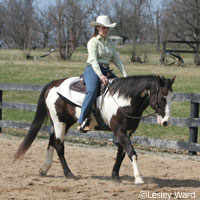 Once upon a time Sparky was one fired-up horse. Responsive, alert, ready to do what his owner asked. Now, Sparky acts more like a fouled spark plug sluggish, unresponsive and hard to get going.
Once upon a time Sparky was one fired-up horse. Responsive, alert, ready to do what his owner asked. Now, Sparky acts more like a fouled spark plug sluggish, unresponsive and hard to get going.
Why is it that some horses are just naturally full of energy while other horses’ get-up-and-go got up and went? There are all kinds of reasons why a horse acts lazy, and world-class trainer Buddy Fisher has probably seen them all. He shares his experience and advice on getting your lazy horse to change his meandering ways.
Getting Physical
Before tackling a re-training regimen, first rule out physical causes for his sluggishness. If your horse is unhealthy or unfit, he may not just be reluctant; he may be incapable of delivering what you’re asking for. Have a veterinarian perform a thorough exam, including blood work to look for underlying disease, a fecal exam to check for worms, lameness evaluation and dental check for teeth that could be causing a problem with the bit or interfering with digestion. Also discuss if your horse’s fitness level and diet are appropriate for the amount of work you’re asking of him.
Physical exertion in hot weather is much harder for an unfit horse and could cause him to be unresponsive. Besides that, some horses just don’t work well in the heat. You may be unintentionally overdoing it in the heat, especially if you’re riding too hard in one long block of time. Ride for shorter periods, a couple times a day, instead of for one long period.
The Rider Did It
Once you’ve ruled out physical causes and your horse still does his Pokey impersonation, it’s time to take a hard look at your riding and training routine. Much of the time, rider errors are behind the “laziness” in a horse, and you may be contributing to, or even causing the problem. Following are some common ways a rider can inadvertently create a lazy horse from a good one:
Bad cues.
Often, particularly among young or novice riders, the horse responds poorly to aids — if he responds at all — because the rider is not providing proper cues. “A lot of times, the experience level of the rider doesn’t match up with the horse in order to keep him light and responsive,” Buddy notes. “If your horse becomes more and more dull and you end up using more leg pressure until you’re squeezing him with all your might just to get him to move, you’ve desensitized him.”
To reverse that, put him through a basic fitness/exercise program to lighten him up. Start with five minutes of walking, build up to five minutes of a working trot in each direction, then walk for a few minutes to let your horse catch his breath. Then lope or gallop the horse for about five minutes to the left and five to the right. Build on that over several weeks by increasing the lope times up to 10 minutes in each direction.
When working the horse, keep in mind that instilling forward motion is critical from the start. “Before you can start working on anything else, you need to gain this. First do this at the walk, then at the trot,” says Buddy.
Problems with lack of response arise if there’s any hesitation in the horse moving forward, and nothing is done to correct it at this point. Ask your horse to move forward by lightly squeezing your legs, and if you don’t get an immediate, noticeable response, follow up with a crop. Then keep him moving forward for quite a distance.
“Don’t stop him after only 30 yards or so; doing this can confuse him,” says Buddy. “He’ll wonder, ‘Does my rider want me to move forward, or stop?'”
Also work on a variety of maneuvers: Move the horse’s shoulders and hips, ask him for two-tracks (leg yield) and half-passes at the trot, back up, do turns on the forehand and on the haunches and so on. The idea is to do plenty of calisthenics-type exercises where you keep an even cadence going. “But if you don’t have the proper feel, balance and timing with your hands, seat and legs, it’s all for naught,” warns Buddy. “A high percentage of the time, most nonprofessional riders use way too much hand and not enough leg.”
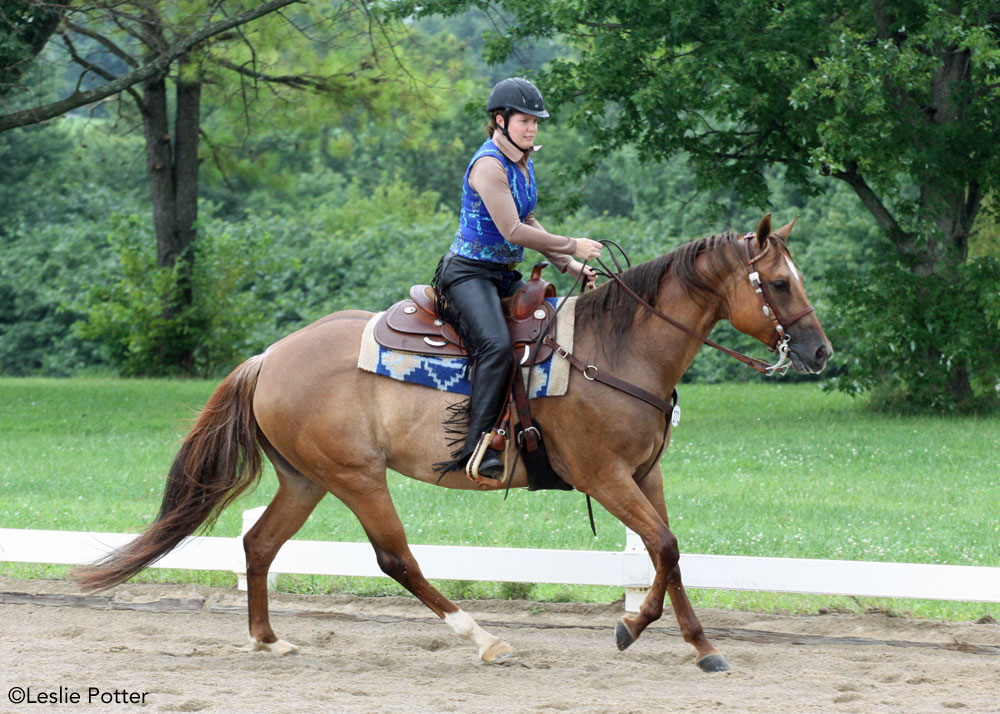
Work in a large area with good footing. Buddy prefers a hard base with 3 to 4 inches of loose sandy loam on top, preferably unfenced so the horse has to listen for directions, and not rely on the fence for guides. “When you put your reins in the center of the horse’s neck, he should continue in the direction he’s going until you tell him to change.”
Use much lighter cues, but make sure the horse understands what you’re asking. For the first day or two, use light pressure with your legs, and if the horse doesn’t respond, reinforce with a crop or a little roll of the spur. However, if you’re not succeeding in lightening your cues after spending time reschooling the basics, seek help from a professional trainer. “Even professional trainers seek help when they’re not making progress,” says Buddy. A good trainer can assess your riding and how the horse is responding, and give you insight into what you may be doing wrong.
Blind focus.
Riders can foster laziness by concentrating too much on the technical elements of their sport and forgetting about the physical conditioning. For example, if you ask a pleasure horse to drop his neck and lope along a wall, day in and day out, you’re not giving your horse enough body-strengthening exercises to keep him fit.
In addition to working on specific elements of a discipline, you should do plenty of conditioning exercises. Counter-bending, counter-cantering, roll-backs, half-passes, turns on the forehand, turns on the haunches, moving the shoulders, moving the hips, trotting, driving up into the bridle, picking them up are all good maneuvers for this, as long as your horse already knows how to do them. A variety will not only keep him in good physical shape, but also prevent boredom.
Burn-out.
Asking your horse for too much for too long can lead to reduced performance, burn-out and resistance, whether you’re training for the show-ring or just an ambitious schooling-ring or trail rider.
“Even the really great horses are built up to peak at certain events,” Buddy says. “Let’s say you’re preparing your horse for a world show or Congress. Throughout the year, you’ll show this horse at a consistent level, but you don’t ask him to give 100 percent all the time, because he is right on the edge — mentally and physically. If you try to hold him there too long, things are going to start coming apart.”
Plan out your riding season and when you’d like your horse to peak, and let him ease up between the really significant shows or long rides.
Don’t ask your horse to go all out or try to keep a competition horse at his peak for more than four to six weeks or you could find yourself with a sullen, sluggish horse. Plan out your riding season and when you’d like your horse to peak, and let him ease up between the really significant shows or long rides.
If you suspect your horse’s sluggish attitude is a sign he’s already burned out, back off for a couple of weeks, and then try once again to bring the horse back to the level you’re aiming for. This can be done by going back to the basics, by not asking the horse to work at performance levels and by working very lightly on elements specific to his sport.
“For example, if I’m working on turnarounds with a reining horse, I’ll back off and just do a lot of loping and galloping around,” Buddy says. “I won’t do a lot of turning or stopping. And when I do work on stops, it will be at a slower speed, working on functional corrections. If I turn around some, it will just be working on the cadence of the turn.” During this two-week reduction in training, spend time riding the horse in the pasture, in straight lines in different directions to keep the horse going forward and to relax his mind.
After two weeks at a reduced level, step up to your goal level once again. If you meet less resistance than before, and the horse starts adapting better to this higher level, then keep him refreshed through an alternating schedule of backing off a little bit every couple of weeks and then working at the desired level again for the next couple of weeks.
Lazy or Mellow?
Sometimes, you’ll find that the horse just won’t step back up to the higher level. If your horse is healthy and fit, is on a suitable nutrition program, and has been given correct aids and proper training, and he still acts like he’s ready to lay down and take a nap, it could be that your horse really is just a low-energy, laid-back kind of guy.
“This is a horse that has more talent than desire,” says Buddy. “If you try to make these lazier horses perform at 100 percent, if you push them up toward the top of what they can do and try to maintain them there, then you’re going to see mental problems. They’re going to fight this because they don’t want to be performing at that level.”
Figure out where your horse is most comfortable performing and how much he can give before he starts having problems with resentment, dread and lack of interest.
Instead, figure out where your horse is most comfortable performing and how much he can give before he starts having problems with resentment, dread and lack of interest. “If your horse is mentally and physically comfortable at a 60 percent level, then you have to listen to that,” says Buddy. In this situation, you have to make a choice: You can switch to a different sport, compete at a lower, more comfortable level or get another horse.
“We’ve had some reiners, for example, that didn’t have the desire, that didn’t like to go fast or turn around,” says Buddy. “But we turned them into really nice all-around horses, and they liked that better. Maybe it was the variety they liked, or that it wasn’t so physically demanding Some of these horses make really good novice, youth and amateur horses.”
If training sessions with your horse become exercises in futility, neither you nor your horse will enjoy the relationship, and that serves no one.
But if you really need a horse capable of consistent work at higher levels, then selling or leasing your lazy horse and acquiring a more competitive one may be the best thing for both of you. After all, if training sessions with your horse become exercises in futility, neither you nor your horse will enjoy the relationship, and that serves no one. If competition is important to you, then you’ll ultimately be happier working with a horse that can perform at the level you need.
More importantly, your lazy friend will be happier, too, as he works with someone who appreciates his laid-back mind and manners. Says Buddy, “The lazy horse is actually what I look for with beginning and novice riders: A horse that’s a little more patient, who isn’t overly energetic or high-spirited, who’s well-trained but not a big-time performer. Those characteristics in a horse can be great, because the horse is much more forgiving than the real sensitive, top performers. Sometimes the mellow horse is really a jewel.”
Further Reading
Dressage Exercises for the Horse That Won’t Go Forward
Speed Event Schooling Strategies

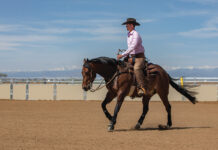
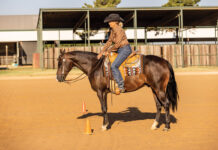
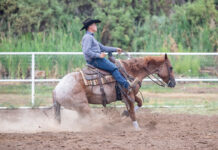

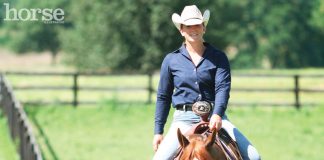

Thankyou. I have a 5 year old thoroughbred. I have never had such a lazy horse. I will get the vet check when I can afford itand probably sell him to somone who will appreciate him. I don’t like him, and that’s unfair.
Thanks. This has given me more insight as to try to help my horse and myself.
I like how this article said something like how you need to remember to keep your horse’s mind going forward. I also like the idea that Buddy offerst in this article about walking for 5 minutes, then trotting for 10 minutes, the increasing how long you can lope, then walking some more. It also brought to my attention a new way to aproaching a lasy horse by working on mechanics, as oposed to crops and spurs and just think GO GO GO! Because that seems to have been the consistant problem with the geldings I ride. Very good article. It brought alot of things back into perspective! Thanks Buddy!
Good information!
I’m glad that someone wrote this article, so now I know how to get my horse out of a slow, lazy pace.
Great information! I have ridden a few lazy horses that I could hardly get to trot! I think alot of people have this problem, especially in hot weather. Thanks for the great article!
Very helpful information
Hey there again, Last time which it was yesterday I was talking about my American Quarter Horse a chestnut named Lucy. Now I will talk about another horse I know but she is always lazy like my 2 moose Lazy Boy and Lazybones. The horse is Maddie. A 7 year old dun/ bay American Quarter Horse. When ever I ride her she always seems to become lazy but we always have to make her move but will she listen no. Thankfully I don’t have to ride her much. I really don’t get it how she becomes lazy like an older animal or like a snail. What can I do to make her stop being lazy and make her listen for a chance of a life time?
This article wasn’t what I expected but it was good and informative.
Is there any step by step thing to do? Just yesterday I was riding a really lazy horse who won’t listen to crops or spurs. Can anyone submit a comment with advice?????
good article
I reccomend checking your bit size. My horse had issues staying in the canter for a very long time, and when I checked her bit, I saw that it was a size to large, so it bounced around on her very sensitive teeth. Now she has no issues whatsoever. =]
I found that making shure your tack fits really helps. I am training a 4 year old filly right now and she was not responding to my rein comands. Turnd out the bit was not the right tipe I needed. Changed the bit and now she is listening a lot better.
Wow, this is a good article. I have a 6 year old TWH/SSH mare that you would have to beat up with a crop to get a trot out of her. I realized that maybe consistancy was a problem, as she is a lil overweight. I started to get excited about trotting her, and using more excited *not aggressive* vocal cues. Over time, she too picked up on that excitement, and now is happy and willing to move out on the trail with only a vocal cue.
Sending this article to a friend, who I think, gives mix signals to her horse.
This article is fantastic! So true that you can’t make a horse into something it’s not (mentally that is). Love that it was pointed out! Thanks!
Great article! My mare is the laid back and mellow type. After working with my instructor, what I have found that works best for her is that once I get a couple really good responses from her, to back off and just let her walk.
I have a Mare who was trained for halter and showed. she is so “lazy/Mellow” She is green broke and takes ANY rider. She even dose trails like a champ but at the slowest walk ever. and trying to get her to move a little more is very hard I do stay out of her mouth I ride with lots of leg and I keep my rains loose. She is just slow and ver unresponsive. We got her like this from her former owners. How can I get her to give me more forward motion and energy?? I don’t want a horse where i need to use so much leg and a crop and spurs. i have to use all three to get a walk and its just mind blowing how ho hum she is. i try luneging her then getting back on i keep the sessions short. and sometimes i go back and work on ground work and still not much forwardness. please help me
Great article Horse Channel!
Cool!
my horse is a rude lazy really bad manered is imune to a crack and just looks through you like you are stupid when I take her into the minage to work she will get down and roll if I stop her she is a night mare she wont work and she wont back up for me under any cercomstances I don’t have any history with her only she has been left to do what she wants and when she wants She is imune to being cracked not that I do this often
Found it helpful. Have a aged mare 17, she was a roping horse in her youn i g life. I got her for pleasure riding only. She doesn’t respone to reiningat all. Was told she had a tumbthumb for traning but not really getting a response from her. Does anyone have a answer for the correct bit to work with her..
Clarice Page, try looking up Natural Horsemanship especially Clinton Anderson. It sounds to me like she doesn’t respect you and perhaps you should start from the basics before trying to ride.
Very helpful article, Thanks